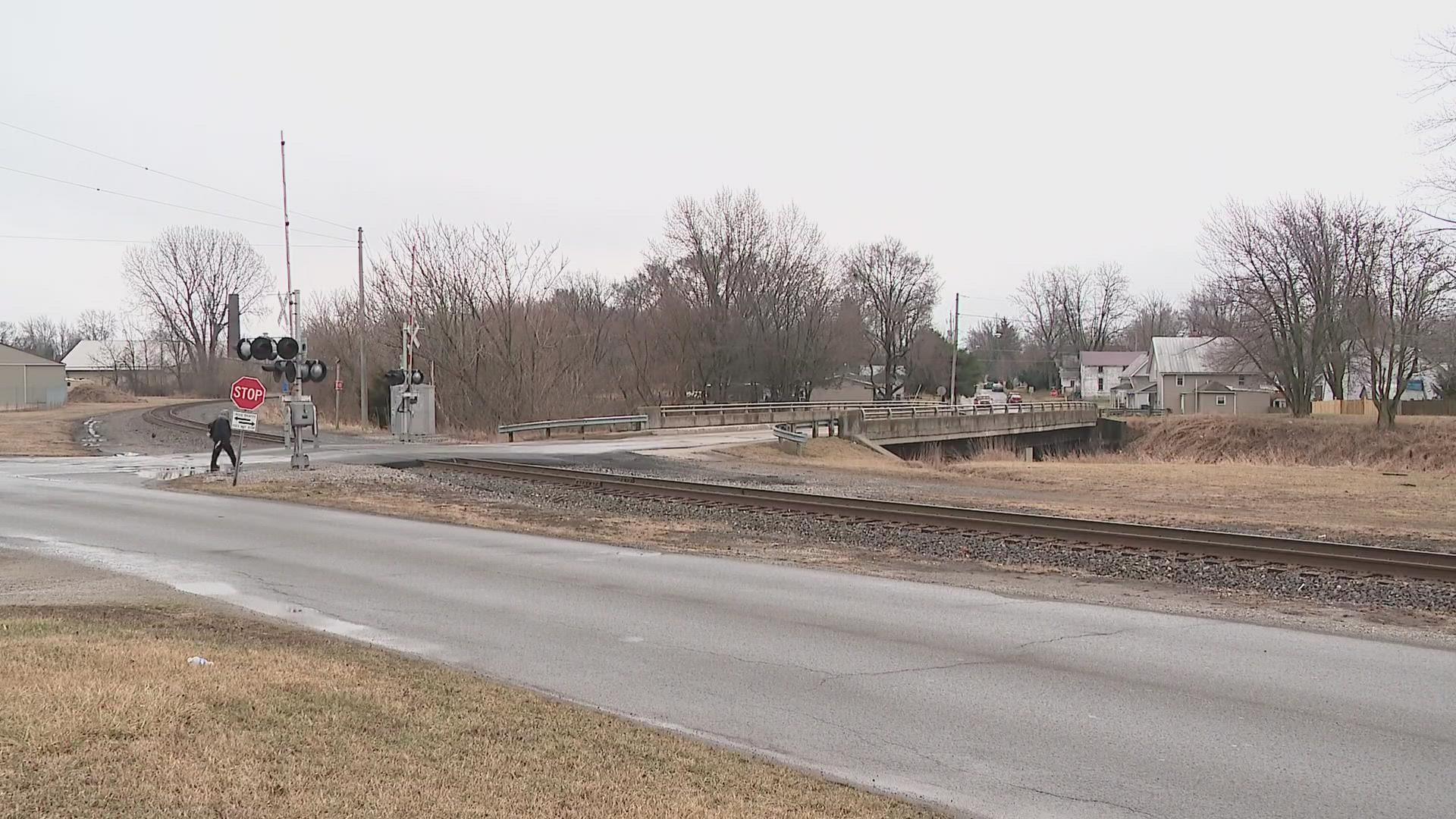KENTON, Ohio — In Kenton, which has a population of about 8,000, CSX trains travel through multiple times a day.
Department Chief Bruce Donnelly said the town averages 12 trains in any given day. Like many small town fire departments, Kenton’s nearest Level 1 hazmat team is in Columbus - more than an hour away.
The distance raises a question for those living in Kenton of what would happen if a derailment of hazardous chemicals, like the one in East Palestine, happened here?
“Departments like our size or volunteer fire departments are going to say: 'We don't have resources for this. What's our first step to keep people safe?'" Donnelly said.
Ohio has 10 different Level 1 teams scattered across the state, leaving small cities like Kenton and East Palestine without immediate assistance from hazmat workers.
Current hazmat team locations includes:
- Allen County Hazmat Team
- Toledo Fire/Rescue
- Cuyahoga County Hazmat Team
- Lake County Hazmat Team
- Dayton Regional Hazmat Team
- Columbus Fire
- Summit County Hazmat Team
- Butler County Co-Op Hazmat Team
- Cincinnati Fire Department Hazmat
- Greater Cincinnati Hazmat Team
Ohio receives roughly 66 million tons of rail freight each year. The frequency of rail freight coming into the state is why the recent train derailment in East Palestine has small fire departments concerned about whether they have the people and training to handle a major derailment.
“For what we typically see, I think we are fairly well prepared for a normal instance here, but a grand scale for a thing like that, no,” Donnelly said.
To help keep first responders informed on what's traveling through an area at any given time, fire departments have access to an app that lets them know in real time what some Class 1 rail cars are carrying. Many rail cars aren't required to report unless it's carrying certain items.
According to federal rules, reporting kicks in when the train is carrying something high-hazard flammable (HHFT), as defined in 49 CFR 171.8 as "a single train transporting 20 or more loaded tank cars of a Class 3 flammable liquid in a continuous block or a single train carrying 35 or more loaded tank cars of a Class 3 flammable liquid throughout the train consist.”
The Ohio Department of Public Safety said, “Ohio Homeland Security receives this information and shares it with local EMAs, and local emergency planning commissions. Common class 3 flammable liquid include acetone, adhesives, paints, gasoline, perfume, ethanol, and methanol.”
The train in East Palestine was not considered a “high hazardous-material train" and did not require notification of local authorities.
Gov. Mike DeWine said during a Tuesday press briefing, “We should know when we have trains carrying hazardous materials through Ohio."
Following the recent derailment, vinyl chloride was intentionally released and burned toxic from five of the rail cars, prompting evacuations from nearby residents.
The Ohio Department of Natural Resources estimated the spill affected more than 7 miles of streams and killed about 3,500 fish.
When derailments happen and send toxic chemicals into the air, the length of time someone is exposed to the chemicals can determine if their health is at risk.
“You can't even test for vinyl chloride in the body, you can, but they require specialized tests and they have been done almost immediately after exposure," said Professor Edwin Boyer of the Ohio State Wexner Medical Center who specialized in medical toxicology. "We know that vinyl chloride is associated with a highly specific kind of cancer called Hepatic angiosarcoma, but people have reported other health effects too, like peripheral neuropathy among other conditions."
Boyer said he would advise that children who live near the train derailment be tested by an expert since chemicals like vinyl chloride tend to settle closer to the ground.
“I would want to know time weighted values at different times of the day and what altitude testing in a room was performed as well as in basements and attics,” he said.

